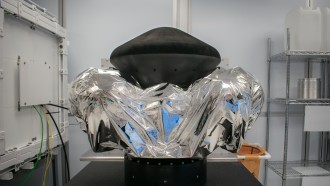People who have a sleeping disorder marked by sufferers acting out their dreams have increased risk of developing dementia and Parkinson's disease, researchers have warned.
Sleep Disorder And Vulnerability To Neurodegenerative Diseases
John Peever, of the University of Toronto in Canada, and colleagues have suggested that a particular sleep disorder could be a sign of a person's vulnerability to these diseases 15 years earlier before diagnosis.
They found that those who suffer from rapid eye movement behavior disorder were particularly at risk.
What Is REM Sleep Behavior Disorder?
Individuals with REM sleep behavior disorder may move their limbs when they dream. They may also shout, talk, hit or punch.
"For most people, dreaming is purely a 'mental' activity: dreams occur in the mind while the body is at rest. But people who suffer from REM sleep behavior disorder (RBD) act out their dreams. They physically move limbs or even get up and engage in activities associated with waking. Some engage in sleep talking, shouting, screaming, hitting or punching," the National Sleep Foundation explained.
Researchers of the new study have found an association between this dreaming condition and the likelihood of developing a group of neurodegenerative diseases such as dementia and Parkinson's later in life.
REM-Active Neurons
Researchers have long known that the brainstem is involved in controlling dreaming during REM sleep, when vivid dreams tend to occur.
Peever has discovered REM-active neurons — the cells responsible for the dream state — and along with colleagues, learned to control these brain cells in rodents and in the process of dreaming. They found that switching on these cells leads to rapid transition into REM sleep.
Peever and colleagues then looked at dreaming dysfunctions in humans, which include REM sleep behavior disorder, and found an association with the neurodegenerative disease.
"We observed that more than 80% of people who suffer from REM sleep disorder eventually develop synucleinopathies, such as Parkinson's Disease, and Lewy bodies dementia," Peever said. "Our research suggests sleep disorders may be an early warning sign for diseases that may appear some fifteen years later in life."
Peever, who presented the findings at the 2017 Canadian Neuroscience Meeting, is hopeful that their findings could pave way for a neuroprotective strategy, wherein diagnosing REM disorders would allow health experts to provide individuals with advice that could keep them healthy long before they get to develop more serious neurological conditions.
Parkinson's Disease And Lewy Body Dementia In The United States
Figures from the National Institutes of Health show that about 50,000 people in the United States get diagnosed of Parkinson's disease each year, and around half a million live with the disease. The condition is marked by progressive death of brain cells and is characterized by slowness of movement, tremor and impaired balance.
Lewy body dementia, on the other hand, affects 1 million adults in the United States. It is the second most common form of dementia next to Alzheimer's disease. Those with the condition may experience visual hallucinations, changes in attention and alertness and exhibit Parkinson's disease-like symptoms.









